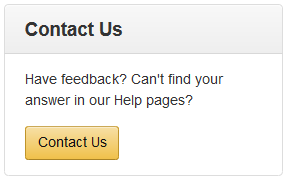What's Going On
On June 15th, Amazon
announced a change to how the KDP Select Global Fund will work.
In true internet fashion, this has
created panic in some corners and wild speculation in others.
Here is the example from the post
For simplicity, assume the fund is $10M
and that 100,000,000 total pages were read in the month:
The author of a 100 page book which was
borrowed and read completely 100 times would earn $1,000 ($10 million
multiplied by 10,000 pages for this author divided by 100,000,000
total pages).
The author of a 200 page book which was
borrowed and read completely 100 times would earn $2,000 ($10 million
multiplied by 20,000 pages for this author divided by 100,000,000
total pages).
The author of a 200 page book which was
borrowed 100 times but only read half way through on average would
earn $1,000 ($10 million multiplied by 10,000 pages for this author
divided by 100,000,000 total pages).
It sounds great. $1,000 in additional
royalties, but as many people have pointed out those numbers are
not exactly realistic.
Time for Some Wild Speculation
Let’s look at the numbers a little
differently.
Currently the KU/KOLL program has been
running around $1.35 per borrow. Some months have been better and
some worse, but for a ball park figure I’m going to stick with
$1.35 per borrow.
At the end of each month Amazon has
adjusted the fund amount to keep the royalty per borrow around that
level. They start with some fixed amount (like $3M) and then add in
some bonus amount at the end of the month to reach their target
payout number.
From that, I think it’s safe to say
that Amazon has decided what they think a fair royalty for a borrow
is, and they make the math work out each month.
I’m going to assume that Amazon wants
to keep that target number going forward, but now they want to
calculate it a by page instead of by book.
Let’s say that the Amazon has decided
that a “standard” book size is 200 pages. By standard I mean
that if the book has 200 pages and all 200 pages are read, then the
author would earn the standard royalty rate of $1.35 per book. If
your books are smaller, you’ll make less and if your book is larger
you’ll make more.
That works out to $0.00675 per page.
Yep, that’s a little more than half a penny per page read.
That’s probably a much more realistic
example than the $0.10 a page that Amazon uses in their example.
That $2.000 per month in their example suddenly dropped to $135.00
per month, which is what the author would have made in the old model
for 100 borrows.
What does this really mean?
All the math above is just a guess.
Only the folks at Amazon know what the actual calculations are and it
will be a few months before we’ll have enough information to do any
real analysis of the numbers.
It is safe to assume that if your books
are smaller, you’ll make less money in royalties from borrows. If
your book are larger, you’ll make more. The problem is knowing what
smaller or larger is relative too.
But, that isn’t the real take away
from this. This is an excellent example of one of the risks of
independent publishing as opposed to going with a traditional
contract. Once you sign a traditional contract with a publisher you
know what the rules are. When you self-publish through, the only
thing that you can count on is that the rules will change, and your
option is to accept the new terms or to move on.
As an independent writer the choice is
up to you. When Amazon first started the Kindle On-Line Lending
Library (KOLL) some authors split their larger length novels into a
collection of smaller books released as a series. Others decide to
focus on short stories that they could release quickly. A few pulled
their books off of Amazon in protest. More just road it out.
What should you do?
First, and always, write what you want
to write. If you don’t enjoy it why bother?
Second, avoid the hype, but be
realistic. If 100% of your monthly income is coming for short story
borrows on Amazon, you are going to encounter some rough months
ahead.
Third, explore other options. Amazon is
not the only method of distribution out there. The more you know
about what your choices are, the better you’ll feel about the
choice you do make.
Finally, don’t worry about beating
the system. The system will change. You can’t control that part of
the process. Focus on what you can control - writing a great story.
If you are just starting a novel today, the odds are that by the time
you are ready for publishing the rules will have changed again.
What do you think?
Amazon thinks this will be better for the readers. That it will put author's goals in line with reader's expectations.
Will it make a difference? Are writers just writing for the system or are they already writing for their audience?

















